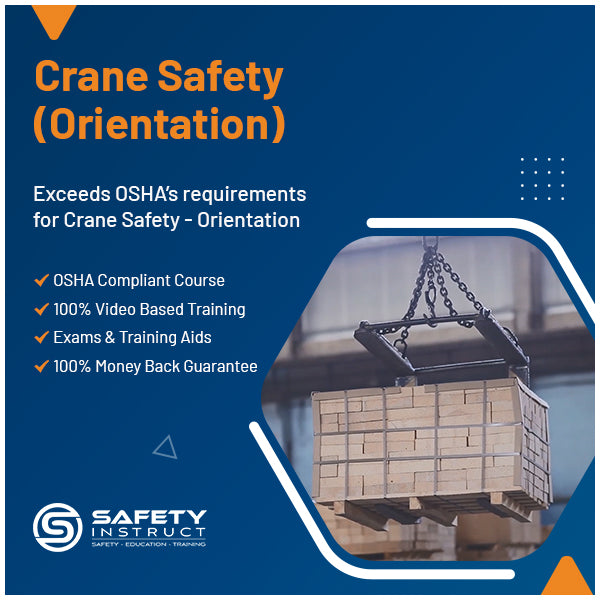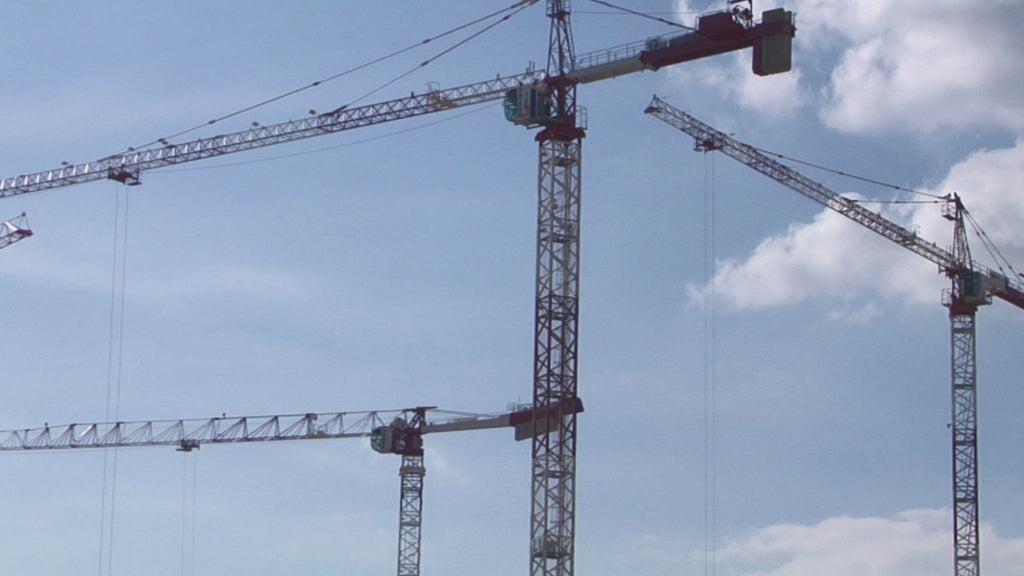No Products in the Cart
Click Here to Schedule a FREE Consultation
Phone: 866-943-6887 Email: sales@safetyinstruct.com



Cranes are a critical piece of equipment, and you will rarely see a construction site without one. Cranes allow for the lifting and transporting of goods and materials otherwise impossible to lift. There are many types of cranes, and although they all operate in the same basic way, there are different types of cranes for different types of environments and materials. Although invaluable to most work sites, cranes can also be dangerous and deadly. Working safely requires you to know about the different types of cranes, how they operate, and how accidents happen.
Types of Cranes
There are different types of cranes for different types of tasks. Overhead Cranes are found in warehouses, they transport goods back and forth along a horizontal line. Truck Mounted Cranes are mobile and consist of a boom mounted to a truck which can drive around to different locations. Rough Terrain cranes are also truck mounted, except they are designed for rough rocky terrains, so they are larger and bulkier. Tower cranes are sedentary and do not move, but they can turn in a circle, allowing for 360 degrees of motion.
OSHA Requirements
Due to a recent rise in crane accidents, OSHA has created a new set of compliance standards for all individuals who will work around a crane. This includes specific training for each individual involved in a crane hoist. Crane Operators must understand the crane's capabilities and limitations, and how to work on various terrain. Material Handlers must know how to properly inspect all rigging devices and how to safely rig different types of loads, Hand Signalers must know the exact signals needed to communicate with a crane operator. Maintenance Personnel must know the proper way to inspect a crane before use and how to spot weak or compromised areas, and Ground inspectors must know how to evaluate the terrain as well as understand electrical hazards and how to avoid them. Safe crane operation requires OSHA certification, which includes both a written and practical exam
Inspections & Handling
In order to have a safe, successful lift, both the crane and all its attachments must be inspected before any use. This inspection insures that all mechanics of the crane are in working order and all lifting materials are strong, and not compromised. At this time, one must also double-check the weight capacity of the lifting device to be sure they will not overload a crane hook. These inspections must include the controls, the attachments, the rigging devices and also the ground. To work safely, one must also know which rigging devices are best suited for the load being lifted and how to attach and lift it correctly and how to receive it safely.
Material Handling
In addition to understanding how your crane operates, you must also understand the different types of materials being lifted and which attachment device is best suited to make the lift. You must also know how and where to attach the load, when to pad the load, and when to use a sling. In addition, knowing how to lift a load, how to move it safely and who to properly receive it are all part of working safely. It is important that you always lift slowly and maintain as vertical a line as possible, move the load slowly, never speed, and only follow communication from the certified hand signaler.


